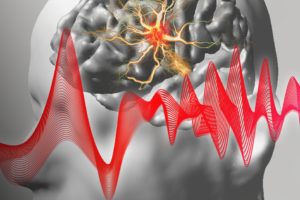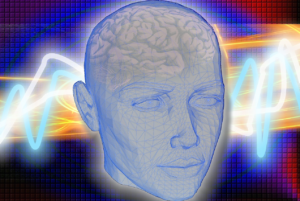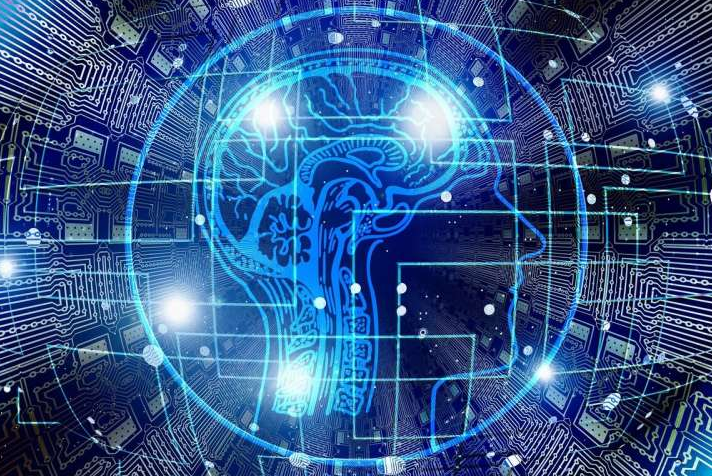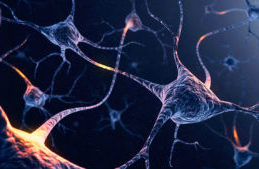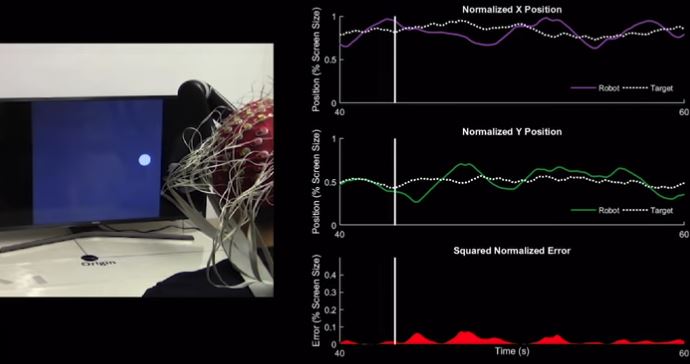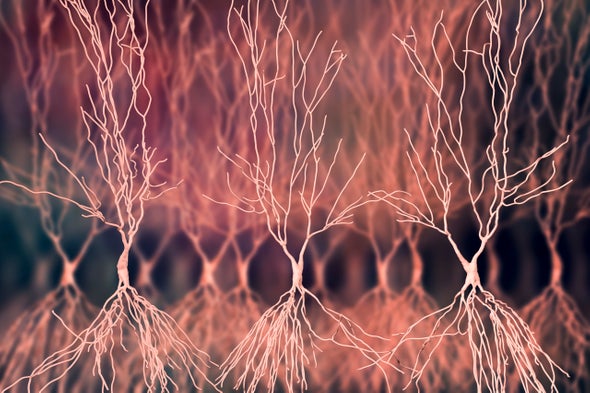Noninvasive Technology Steps Ahead to Help Epilepsy Patients
23 April 2021
Discovering and developing innovative, noninvasive solutions to advance medical technology and, ultimately, help people, is the driving force behind Bin He’s research.
Read more – Carnegie Mellon University
Out of my mind: Advances in brain tech spur calls for ‘neuro-rights’
29 March 2021
BERLIN (Thomson Reuters Foundation) – A turning point for Rafael Yuste, a neuroscientist at New York’s Columbia University, came when his lab discovered it could activate a few neurons in a mouse’s visual cortex and make it hallucinate.
Artificial Neurons Help Decode Cortical Signals
23 March 2021
Russian scientists have proposed a new algorithm for automatic decoding and interpreting the decoder weights, which can be used both in brain-computer interfaces and in fundamental research.
Tiny Machine Poised to Unlock Brain’s Mysteries
19 March 2021
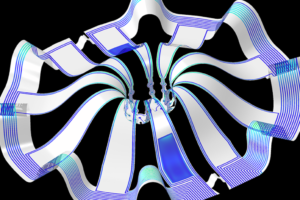
Image from “Three dimensional multifunctional neural interfaces for cortical spheroids and engineered assembloids,” Science Advances. This work is licensed under CC BY (https://creativecommons.org/licenses/by/4.0/)
A team of scientists, led by researchers at Shirley Ryan AbilityLab, Northwestern University and the University of Illinois at Chicago, has developed novel technology promising to increase understanding of how brains develop, and offer answers on repairing brains in the wake of neurotrauma and neurodegenerative diseases.
Yale scientists capture the choreography of a developing brain
24 February 2021, by Bill Hathaway
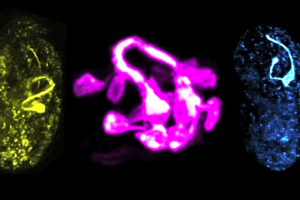
Yale scientists have developed methods to visualize the development of the brain of a worm in all its rich complexity.
The formation of a brain is one of nature’s most staggeringly complex accomplishments. The intricate intermingling of neurons and labyrinth of connections also make it a particularly difficult feat for scientists to study.
Can privacy coexist with technology that reads and changes brain activity?
11 February 2021, Laura Sanders

The idea of letting outsiders inside the mind sparks a slew of ethical and privacy questions.
JULIA YELLOW
Gertrude the pig rooted around a straw-filled pen, oblivious to the cameras and onlookers — and the 1,024 electrodes eavesdropping on her brain signals. Each time the pig’s snout found a treat in a researcher’s hand, a musical jingle sounded, indicating activity in her snout-controlling nerve cells.
Brainwave: If Memristors Act Like Neurons, Put Them in Neural Networks
27 January 2021, by Charles Q. Choi

Image: Image: CEA-Leti
The memristors (the top grey-and-black sandwich stuctures) in a new array can exploit randomness to perform machine-learning tasks.
Newfound “edge AI” applications for device that integrates memory and computing, has randomness built in, sips battery power
DISCOVER EBRAINS: A LOOK INSIDE EUROPE’S NEW PLATFORM FOR THE BRAIN
11 December 2020
The publication Discover EBRAINS introduces the powerful EBRAINS research infrastructure to the world. EBRAINS has been created by the EU-funded Human Brain Project, and offers an extensive portfolio of brain data, scientific services, digital tools and computing resources for researchers and industry.
Read more – International Brain Initiative
What is Computation’s Role in Neuroscience?
2 November 2020, by Shana Lynch

Wu Tsai Neurosciences Institute Director William Newsome explores the intersection of AI and neuroscience with HAI Denning Co-Director Fei-Fei Li.
Wu Tsai Neurosciences Institute’s William Newsome discusses motivation, consciousness, and the fascinating challenges of computational neuroscientists in this Director’s Conversation.
Read more – Stanford University.
UChicago scientists uncover secrets to designing brain-like devices
10 November 2020, by Viktor Rozsa

Ball and stick (central) representation of the defective material simulated in the study, for neuromorphic applications. (Illustration by Emmanuel Gygi)
Even with decades of unprecedented development in computational power, the human brain still holds many advantages over modern computing technologies. Our brains are extremely efficient for many cognitive tasks and do not separate memory and computing, unlike standard computer chips.
Read more – The University of Chicago
The BRAIN Initiative® pioneers the future through open science technology
29 September 2020
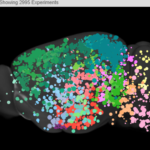
An image from the Allen Mouse Brain Connectivity Atlas that shows the injection sites from nearly 3000 experiments.
Advances in neuroscience have led to the collection of enormous amounts of brain data. Now, collaborative BRAIN-funded “open science” efforts are democratizing these data and analytic tools for the research community.
Read more – National Institutes of Health.
First ‘Plug and Play’ Brain Prosthesis Demonstrated in Paralyzed Person
7 September 2020, by Nicholas Weiler

An ECoG array comprises a pad of electrodes that is surgically placed on the surface of the brain. Photo by Noah Berger
In a significant advance, researchers working toward a brain-controlled prosthetic limb at the UCSF Weill Institute for Neurosciences have shown that machine learning techniques helped a paralyzed individual learn to control a computer cursor using their brain activity without requiring extensive daily retraining, which has been a requirement of all past brain-computer interface (BCI) efforts.
Read more – University of California San Francisco.
Ultra-low power brain implants find meaningful signal in grey matter noise
27 July 2020
Drastically reducing the power and computation needed to identify our intentions, researchers open up a future of advanced therapies and machines enabled by our thoughts.
Read more – University of Michigan.
Motivating Women To Pursue STEM: Featuring Dr. Karen Moxon
14 May 2020
Dr. Karen Moxon is a powerhouse researcher in the field of neuroengineering and professor of bioengineering, that focuses on understanding how information in the brain is represented and how it is affected by spinal injury, stroke, or other brain damage.
Technology innovation for neurology: Brain signal measurement using printed tattoo electrodes
13 May 2020, by Christoph Pelzl
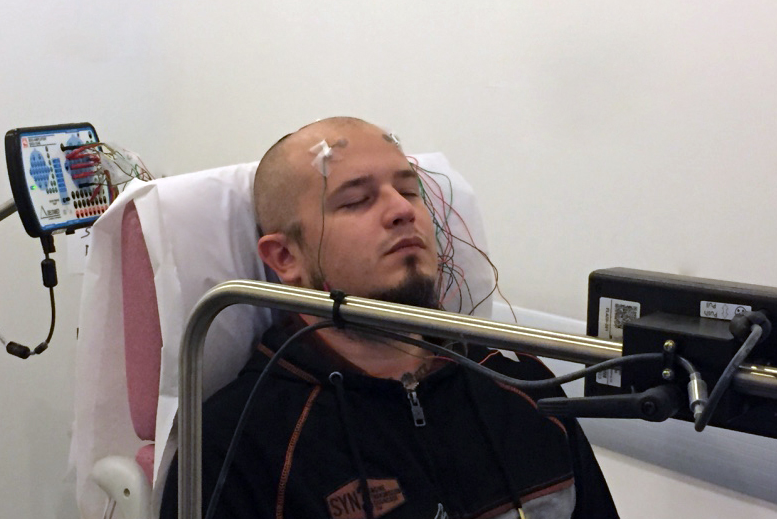
The reliability and accuracy of tattoo electrodes has been successfully tested under real clinical conditions. © Greco – TU Graz
TU Graz researcher Francesco Greco has developed ultra-light tattoo electrodes that are hardly noticeable on the skin and make long-term measurements of brain activity cheaper and easier.
Data for Good: Biological Scientist, DSI Member Rafael Yuste on the Ethical Development of Neurotechnology
23 March 2020
Members of Columbia’s NeuroTechnology Center have drafted a technocratic oath for engineers, scientists, and entrepreneurs working on neurotechnologies.
Read more – Columbia University.
Stanford device brings silicon computing power to brain research and prosthetics
A new device enables researchers to observe hundreds of neurons in the brain in real-time. The system is based on modified silicon chips from cameras, but rather than taking a picture, it takes a movie of the neural electrical activity.
Here’s How Facebook’s Brain-Computer Interface Development is Progressing
25 February 2020, Tekla S. Perry

Photo: Facebook
Mark Chevillet is the director of the brain-computer interface (BCI) research program at Facebook Reality Labs.
Facebook’s BCI research team focuses 2020 efforts on reducing noise in its optical brain sensing system
International Brain Initiative: An Innovative Framework for Coordinated Global Brain Research Efforts
22 January 2020

The International Brain Initiative (IBI) has been established to coordinate efforts across existing and emerging national and regional brain initiatives. This NeuroView describes how to be involved and the new opportunities for global collaboration that are emerging between scientists, scientific societies, funders, industry, government, and society.
Researchers reconstruct spoken words as processed in nonhuman primate brains
12 December 2019

Using a brain-computer interface, a team of researchers has reconstructed English words from the brain activity of rhesus macaques that listened as the words were spoken.
The Data-Sharing Problem in Neuroscience
04 October 2019

Credit: Ashley Mackenzie
When it comes to data sharing, neuroscience lags behind many other fields. But a growing number of large-scale projects are inspiring new efforts to develop workable tools.
Four Types of Brain Cells Identified Based on Electrical Spiking Activity
30 August 2019, by Emily Waltz
We often dumb down our most complex organ—the brain—by referring to most of its constituents as simply “neurons.” There are, in fact, many different types of neurons, but for most of them, we don’t know enough about how they work to even give them a name.
Highest-Resolution Human Brain ‘Parts List’ To Date Lays Road Map to Better Treatments for Neurological and Psychiatric Disorders
21 August 2019

Rebecca Hodge, Ph.D., a scientist at the Allen Institute for Brain Science, holds a section of postmortem human brain used in the study
A new study from the Allen Institute for Brain Science has written the most detailed “parts list” of the human brain to date. This categorization of our brain cell types lays the groundwork to improve our understanding of our own brains and to dramatically change how we treat human brain diseases and disorders.
Read more – Allen Institute for Brain Science
First-ever noninvasive mind-controlled robot arm
20 June 2019, Emily Durham
A team of researchers from Carnegie Mellon has made a breakthrough in the field of noninvasive robotic device control. Using a noninvasive brain-computer interface, they have developed the first-ever successful mind-controlled robotic arm exhibiting the ability to continuously track and follow a computer cursor.
Read more – Carnegie Mellon University.
Better Memory through Electrical Brain Ripples
14 June 2019, Simon Makin
Specific patterns of brain activity are thought to underlie specific processes or computations important for various mental faculties, such as memory. One such “brain signal” that has received a lot of attention recently is known as a “sharp wave ripple”—a short, wave-shaped burst of high-frequency oscillations.
Read more – Scientific American
Research Brief: 3D-Printed Transparent Skull Provides a Window to the Brain
02 April 2019
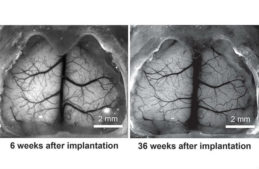
Researchers at the University of Minnesota have developed a unique 3D-printed transparent skull implant for mice that provides an opportunity to watch activity of the entire brain surface in real time. The device allows fundamental brain research that could provide new insight for human brain conditions such as concussions, Alzheimer’s and Parkinson’s disease.
The research is published in Nature Communications. Researchers also plan to commercialize the device, which they call See-Shell.
Read more – University of Minnesota
Fast, Flexible Ionic Transistors for Bioelectronic Devices
27 February 2019

Many major advances in medicine, especially in neurology, have been sparked by recent advances in electronic systems that can acquire, process, and interact with biological substrates. These bioelectronic systems, which are increasingly used to understand dynamic living organisms and to treat human disease, require devices that can record body signals, process them, detect patterns, and deliver electrical or chemical stimulation to address problems.
Read more – Columbia Engineering
Neuron: Special Issue on Neuroethics
06 February 2019

The brain is special because of the meaning and assumptions about what can be revealed through neuroscience.
Neuroscience has become a national funding priority around the globe with a growing cohort of large-scale research initiatives who endeavor to understand the scientific basis of feelings, thinking, and ultimately the mind. Our ever-expanding global neuroscience landscape requires that we, as a society and as scientists, consider the underlying values and ethics that drive brain research across culture and continents.
Read more – International Brain Initiative, Neuron
Neural Electrodes Snake Around Blood Vessels, Up Nerves
30 January 2019, by Samuel K. Moore

Image: University of California, San Diego
Shape-memory materials could make medical devices longer lasting and easier to implant.
Getting neurons to communicate with electronics has always been hard—hard on the neurons, that is. Arrays of rigid metal electrodes implanted in the brain pierce blood vessels and dislodge support cells, causing the body to cover up the array with an insulating scar, which prevents many incoming signals from getting through. Engineers now think shape-memory materials could do the job much better, because they can be programmed to snake around blood vessels and climb nerves like a vine.
Columbia Engineers Translate Brain Signals Directly into Speech
29 January 2019
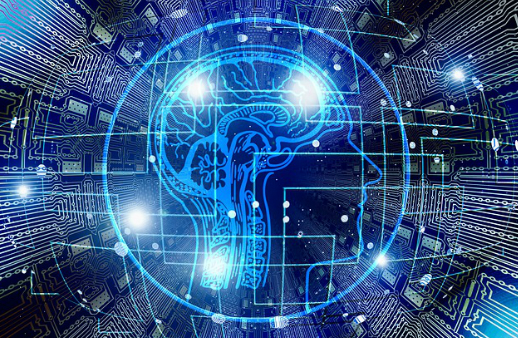
Advance marks critical step toward brain-computer interfaces that hold immense promise for those with limited or no ability to speak.
In a scientific first, Columbia neuroengineers have created a system that translates thought into intelligible, recognizable speech. By monitoring someone’s brain activity, the technology can reconstruct the words a person hears with unprecedented clarity.
Read more – Columbia, Zuckerman Institute
The Magic Touch: Bringing Sensory Feedback to Brain-Controlled Prosthetics
21 January 2019, by Chris Lo
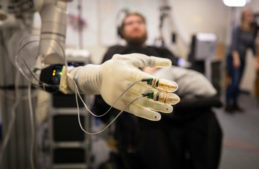
Credit: Pitt/UPMC
Researchers at the University of Chicago are leading a project to introduce the sense of touch to the latest brain-controlled prosthetic arms. Adding sensory feedback to already-complex neuroprosthetics is a towering task, but offers the chance to radically transform the lives of amputees and people living with paralysis.
For centuries prosthetics have been limited to basic attachments replacing missing limbs or extremities, but in the last 20 years, artificial limbs have moved forward at an electric pace.
Read more – Verdict: Medical Devices
Stimulating the Brain – Without Major Surgery
4 December 2018, by Catriona May
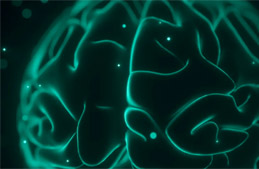
One of the treatments for managing Parkinson’s Disease is to use deep electrical brain stimulation to relieve debilitating symptoms like muscle stiffness and tremors.
But it’s a daunting procedure. Surgeons must cut into the skull to expose the brain and stimulate it directly. Unsurprisingly, this kind of open brain surgery carries with it a long list of risks, including brain trauma. What if the brain could be stimulated without having to drill a hole in patients’ skulls?
Researchers Design New Brain Implant
2 December 2018, by Zachary Levin

Researchers have shown that an experimental brain implant allows individuals with paralysis to control a cursor on a tablet computer. The study marks another step toward the group’s ultimate goal of restoring forms of communication to individuals with neurological impairments, said Krishna Shenoy, professor of engineering at Stanford University and a senior author of the paper.
Read more – The Brown Daily Herald
Neuromodulation Poses Next Step in Treating Heart Disease
10 October 2018, by Cynthia Weber

Jeffrey Ardell, Founding Director of the UCLA Neurocardiology Research Program of Excellence, is a fellow of the American Heart Association and has been one of the principal investigators in the field of neurocardiology for the last three decades. Ardell will be a keynote speaker at NeuroCAS, a collaborative workshop that will explore the future challenges of neurotechnology. IEEE Pulserecently spoke with him about the role neuromodulation will play in cardiac disease intervention.
Scientists Connect Three People’s Minds So They can Communicate Using Brainwaves Alone
3 October 2018, by Aristos Georgiou
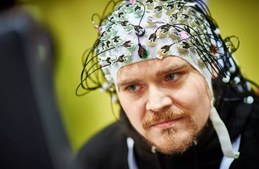
Sending your thoughts directly into someone else’s brain may seem like the stuff of science fiction. But this capability could be closer to reality than you think.
A team from the University of Washington (UW) and Carnegie Mellon University has developed a system, known as BrainNet, which allows three people to communicate with one another using only the power of the brain, according to a paper published on the pre-print server arXiv.
Cosmopolitan Neuroethics: What it is and why we need it
17 July 2018, by Dr. James Giordano and Dr. John Shook

In this interview, James Giordano and John Shook discuss and explain the concept of cosmopolitan neuroethics: what it is, how we can apply it, and why it’s becoming increasingly important in our globalized world.
Jolt the Brain, Then Listen Closely
6 July 2018, by Megan Scudellari
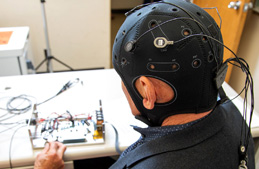
If an electric current passes through the brain, does anyone hear it?
Earlier this year, researchers in the United Kingdom showed that stimulating the brain with mild direct currents helped people stop stuttering. Neurostimulation has also shown promise for treating conditions such as migraines, depression, and the physical effects of stroke.
Brains Improved by Graphene Are on the Horizon
By Dexter Johnson – 13 June 2018
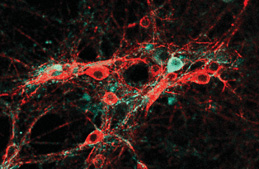
While graphene has been tapped to deliver on everything from electronics to optoelectronics, it’s a bit harder to picture how it may offer a key tool for addressing neurological damage and disorders. But that’s exactly what researchers have been looking at lately because of the wonder material’s conductivity and transparency.
A Tiny Microscope Can Now Record a Mouse’s Brain in Real Time
By David Grossman – 7 May 2018

Using a tiny microscope outfitted with some special gear, scientists have built a tool that can track the millions of interactions among brain cells in a mouse’s head.
Hopefully one day, this technology could be applied to the human mind to help better understand conditions like autism and schizophrenia.
The Ethics of Experimenting with Human Brain Tissues
25 April 2018

Difficult questions will be raised as models of the human brain get closer to replicating its functions, explain Nita A. Farahany, Henry T. Greely and 15 colleagues.
If researchers could create brain tissue in the laboratory that might appear to have conscious experiences or subjective phenomenal states, would that tissue deserve any of the protections routinely given to human or animal research subjects?
This question might seem outlandish. Certainly, today’s experimental models are far from having such capabilities. But various models are now being developed to better understand the human brain, including miniaturized, simplified versions of brain tissue grown in a dish from stem cells — brain organoids1,2. And advances keep being made.
Adult Human Brains Don’t Grow New Neurons in Hippocampus
By Shawn Sorrells, Arturo Alvarez-Buylla, Mercedes Paredes – 12 March 2018
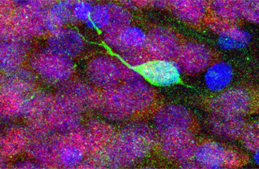
When our recent study met significant skepticism, we weren’t surprised. After all, we ourselves remained skeptical of what we were seeing throughout our investigation. But repeated and varied experiments convinced us our conclusions were correct: New brain cells don’t grow (or are extremely rare) in the adult human hippocampus, a region important for learning and memory. The birth of new neurons in human memory circuits, in other words, declines during childhood to undetectable levels in the adult.
Retraining the Brain’s Vision Center to Take Action
By Robert Sanders – 1 March 2018
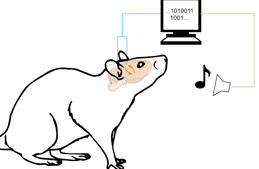
Neuroscientists have demonstrated the astounding flexibility of the brain by training neurons that normally process input from the eyes to develop new skills, in this case, to control a computer-generated tone. “We arbitrarily hijacked small groups of neurons in the visual cortex and virtually re-routed their output to make them control a brain-machine interface, or BMI,” said Jose Carmena, senior author of a paper about the development that will appear March 1 in the journal Neuron.
Brain-Machine Interface Study Suggests How Brains Prepare for Action
By Nathan Collins – 16 February 2018

Somewhere right now in Pyeongchang, an Olympic skier is thinking through the twists and spins she’ll make in the aerial competition, a speed skater is visualizing how he’ll sneak past a competitor on the inside line, and a curler is imagining the perfect sweep. It’s called mental rehearsal, and psychologists and athletes alike know that it works: picturing ourselves going through routines, whether it’s figure skating or something more mundane, improves our chances of success.
Nanoparticles in Mice Brains Light Up, Trigger Memories
By Emily Waltz – 8 Feburary 2018

No optical fibers, no headgear, no implants: This is the new optogenetics, systems that enable scientists to control cell behavior using simple flashes of visible light. Researchers today reported that they had successfully manipulated deep brain cells in mice using a light-based tool without an invasive surgical procedure.
Microsoft Patents Mind Control for Your Technologies
By Lindsay Huber – 15 January 2018

Microsoft’s new patent gives users the ability to control apps with their minds. This month, Microsoft was granted a patent for a device that decodes electroencephalogram (EEG) readings to launch and operate compatible apps.
Read More – The American Genius
“Brain-on-a-Chip” Devices are Changing How We Study the Brain
By Abby Norman – 15 January 2018
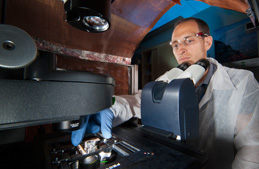
Researchers at the Lawrence Livermore National Laboratory have devised a new use for “brain-on-a-chip” technology: testing the effects of biological and chemical agents on the brain over time. This work is part of an ever-growing body of research dedicated to developing “brain-on-a-chip” technology in hopes that one day, it may eliminate the need for animal testing.
Ethical Questions Raised by Brain-Computer Interfaces
By Sasha Burwell and Eric Racine – 18 December 2017
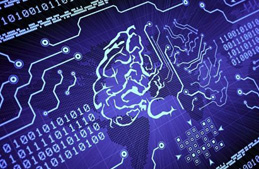
A recent article published in BMC Medical Ethics explores the ethical aspects of brain-computer interfaces (BCI): an emerging technology where brain signals are directly translated to outputs with the help of machines. Here, two of the authors of the paper tell us more about the applications of BCI, its portrayal in the media, and some of the key ethical issues it raises.
Brain organoids get cancer, too, opening a new frontier in personalized medicine
By Sharon Begley – 1 December 2017

Photo by Amanda Linkous
In 30 years as an oncologist, Dr. Howard Fine estimates he has treated some 20,000 patients with glioblastomas, the most deadly form of brain cancer, “and almost all of them are dead.” Of the 100 new glioblastoma patients he saw last month, “five years from now, only three will be alive,” he said.
Inside the Race to Hack the Human Brain
By John H. Richardson – 16 November 2017
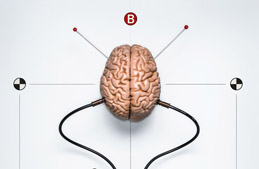
In an ordinary hospital room in Los Angeles, a young woman named Lauren Dickerson waits for her chance to make history.
She’s 25 years old, a teacher’s assistant in a middle school, with warm eyes and computer cables emerging like futuristic dreadlocks from the bandages wrapped around her head. Three days earlier, a neurosurgeon drilled 11 holes through her skull, slid 11 wires the size of spaghetti into her brain, and connected the wires to a bank of computers. Now she’s caged in by bed rails, with plastic tubes snaking up her arm and medical monitors tracking her vital signs.
Four Ethical Priorities for Neurotechnologies and AI
By Rafael Yuste, Sara Goering, et al – 8 November 2017

Consider the following scenario. A paralysed man participates in a clinical trial of a brain–computer interface (BCI). A computer connected to a chip in his brain is trained to interpret the neural activity resulting from his mental rehearsals of an action. The computer generates commands that move a robotic arm. One day, the man feels frustrated with the experimental team. Later, his robotic hand crushes a cup after taking it from one of the research assistants, and hurts the assistant. Apologizing for what he says must have been a malfunction of the device, he wonders whether his frustration with the team played a part.
This scenario is hypothetical. But it illustrates some of the challenges that society might be heading towards.
Congratulations to the Participants and the Winners at the IEEE Brain Data Bank Competition in Glasgow
October 31, 2017
[URIS id=1152]Read more about the competition
Gene Editing in the Brain Gets a Major Upgrade
October 19, 2017
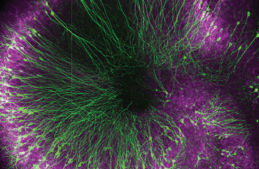
Genome editing technologies have revolutionized biomedical science, providing a fast and easy way to modify genes. However, the technique allowing scientists to carryout the most precise edits, doesn’t work in cells that are no longer dividing – which includes most neurons in the brain. This technology had limited use in brain research, until now. Research Fellow Jun Nishiyama, M.D., Ph.D., Research Scientist, Takayasu Mikuni, M.D., Ph.D., and Scientific Director, Ryohei Yasuda, Ph.D. at the Max Planck Florida Institute for Neuroscience have developed a new tool that, for the first time, allows precise genome editing in mature neurons, opening up vast new possibilities in neuroscience research.
Read More – Max Planck Florida Institute for Neuroscience
Stanford Scientists Seek to Speak the Brain’s Language to Heal its Disease
By Nathan Collins – October 17, 2017
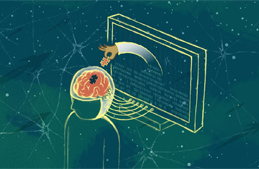
Since the 19th century at least, humans have wondered what could be accomplished by linking our brains – smart and flexible but prone to disease and disarray – directly to technology in all its cold, hard precision … the melding of brains and machines for treating disease and improving human health is now a reality. Brain-machine interfaces that connect computers and the nervous system can now restore rudimentary vision in people who have lost the ability to see, treat the symptoms of Parkinson’s disease and prevent some epileptic seizures. But, the biggest challenge in each of those cases may not be the hardware that science-fiction writers once dwelled on. Instead, it’s trying to understand, on some level at least, what the brain is trying to tell us – and how to speak to it in return.
Facebook Thinks the Most Useful Digital Assistant is the One That Can Read Minds
By W. Harry Fortuna – October 9, 2017
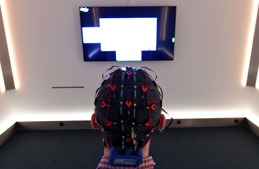
Facebook wants digital assistants like Siri and Cortana to shut up already. People all over are asking Alexa to play them a song, Google Assistant to set a reminder, and surely someone has asked Bixby—Samsung’s new voice assistant—something, but it turns out that no one wants to PDA (personal digital assist) in public. The Facebook solution: give the assistant direct access to our minds.
How We Won Gold in the Cyborg Olympics’ Brain Race
By Serafeim Perdikis, Luca Tonin, and Jose Del R. Millan – August 30, 2017

In October 2016, inside a sold-out arena in Zurich, a man named Numa Poujouly steered his wheelchair up to the central podium. As the Swiss national anthem played, organizers of the world’s first cyborg Olympics hung a gold medal around Poujouly’s neck. The 30-year-old, who became paralyzed after a bicycle accident in his teens, had triumphed in the tournament’s most futuristic event: a video-game-like race in which the competitors controlled their speeding avatars with just their minds.
‘Your Brain on Art’ Conference to Explore the Physiological Side of Creativity
By Kathy Pretz – August 11, 2017

An imaginative mind generates ideas that can lead to breakthroughs, but the creative process is still a mystery. Investigating what happens in the brain during that process is a focus of the International Conference on Mobile Brain-Body Imaging and Neuroscience of Art, Innovation, and Creativity. Known as the Your Brain on Art conference, the event is scheduled for 10 to 13 September in Valencia, Spain. IEEE Brain is one of the technical sponsors.
New Kinds of Brain Cells Revealed
August 10, 2017

Under a microscope, it can be hard to tell the difference between any two neurons, the brain cells that store and process information. So scientists have turned to molecular methods to try to identify groups of neurons with different functions. Salk Institute and University of California San Diego scientists have profiled chemical modifications of DNA molecules in individual neurons, giving the most detailed information yet on what makes one brain cell different from its neighbor. This is a critical step in beginning to identify how many types of neurons exist, which has eluded neuroscientists but could lead to a dramatically better understanding about brain development and dysfunction.
World’s Most Detailed Scan of Brain Internal Wiring Produced by Scientists at Cardiff University
July 3, 2017
Towards a High-Resolution, Implantable Neural Interface
DARPA – July 10, 2017
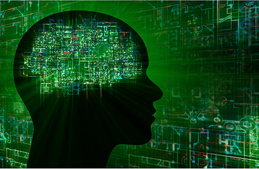
DARPA has awarded contracts to five research organizations and one company that will support the Neural Engineering System Design (NESD) program: Brown University; Columbia University; Fondation Voir et Entendre (The Seeing and Hearing Foundation); John B. Pierce Laboratory; Paradromics, Inc.; and the University of California, Berkeley. These organizations have formed teams to develop the fundamental research and component technologies required to pursue the NESD vision of a high-resolution neural interface and integrate them to create and demonstrate working systems able to support potential future therapies for sensory restoration. Four of the teams will focus on vision and two will focus on aspects of hearing and speech.
Images from the IEEE Brain Data Bank Challenge at St. Petersburg, Russia
June 26-27, 2017 – A BIG THANK YOU to our volunteers, sponsors, and participants at the first IEEE Brain Data Bank Challenge.
[URIS id=982]Study Finds Hackers Could Use Brainwaves to Steal Passwords
by Tiffany Westry Womack – June 29, 2017
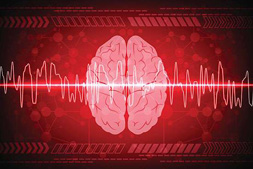
Researchers at the University of Alabama at Birmingham suggest that brainwave-sensing headsets, also known as EEG or electroencephalograph headsets, need better security after a study reveals hackers could guess a user’s passwords by monitoring their brainwaves.
Helping or Hacking? Engineers and Ethicists Must Work Together on Brain-Computer Interface Technology
By Eran Klein and Katherine Pratt – June 13, 2017
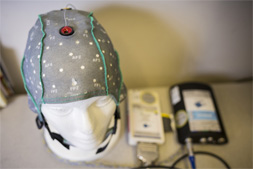
The potential ability to determine individuals’ preferences and personal information using their own brain signals has spawned a number of difficult but pressing questions: Should we be able to keep our neural signals private? That is, should neural security be a human right? How do we adequately protect and store all the neural data being recorded for research, and soon for leisure? How do consumers know if any protective or anonymization measures are being made with their neural data?
IEEE Spectrum Special Report: Can We Copy the Brain?
May 2017
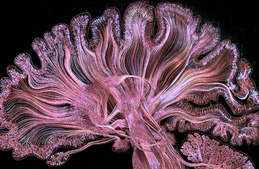
This special issue of IEEE Spectrum contains infographics, videos, and articles on the brain and AI.
Researchers Grow Brain Cells on a Chip
by Emily Waltz – May 18, 2017
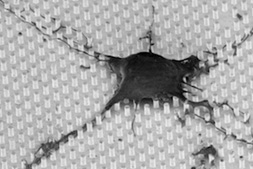
Every human thought starts with a signal traveling from one neuron to another in the brain. Yet we know relatively little about how these connections form. In an effort to watch that process unfold, Australian researchers engineered a nanowire scaffold on a semiconductor chip that enables brain cells to grow and form circuits.
In a Neuro-Techno Future, Human Rights Laws Will Need to be Revisited
By Matt Lam – April 26, 2017
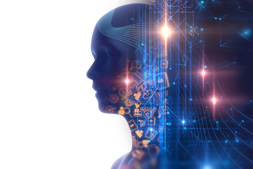
New human rights laws to prepare for advances in neurotechnology that put the ‘freedom of the mind’ at risk have been proposed in the open access journal Life Sciences, Society and Policy. The authors of the study suggest four new human rights laws could emerge in the near future to protect against exploitation and loss of privacy: the right to cognitive liberty, the right to mental privacy, the right to mental integrity and the right to psychological continuity.
With Neuralink, Elon Musk Promises Human-to-Human Telepathy. Don’t Believe It.
by Antonio Regalado – April 22, 2017

Billionaire entrepreneur Elon Musk, by way of blogger and cartoonist Tim Urban, has revealed in a 36,400-word illustrated explainer the thinking behind his new company Neuralink and its mission to use brain implants to directly link human minds to computers. The problem with the post is that, despite its length, Musk does not reveal how he’s going to do it.
Read more – MIT Technology Review
Facebook is building brain-computer interfaces for typing and skin-hearing
by Josh Constine – April 20, 2017
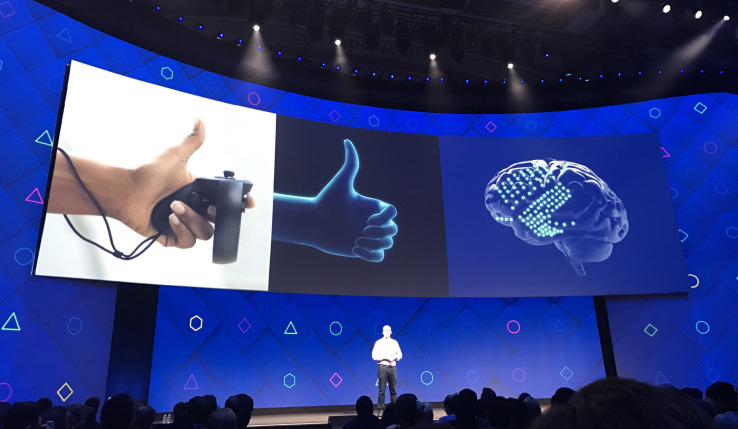
Today at F8, Facebook revealed it has a team of 60 engineers working on building a brain-computer interface that will let you type with just your mind without invasive implants. The team plans to use optical imaging to scan your brain a hundred times per second to detect you speaking silently in your head, and translate it into text.
A Paralyzed Man Was Able to Move His Arm With His Brain
March 28, 2017
Not long ago, Bill Kochevar ate some mashed potatoes — and when he did, the world turned over.
Read more at TIME Health
Elon Musk, His New Company, and Science
by Brian Ahier – March 28, 2017

Tesla and SpaceX CEO Elon Musk has founded a new company called Neuralink Corp. According to the Wall Street Journal Neuralink will be pursuing what Musk has previously called “neural lace” technology, which consists of implanting tiny brain electrodes that could one day upload and download our thoughts.
Humans Control Robots with Their Minds by Watching for Mistakes
By Matt Reynolds – March 6, 2017
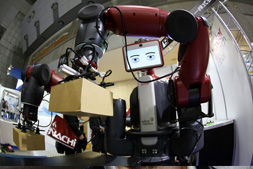
Try again robot, you’re doing it wrong. A brain-computer interface lets people correct robots’ mistakes using the power of their thoughts. IEEE Brain Initiative’s Ricardo Chavarriaga weighed in on this story, with his thoughts on why error potentials make them a good choice for controlling a robot.
How Brain Scientists Forgot That Brains Have Owners
by Ed Yong – February 27, 2017
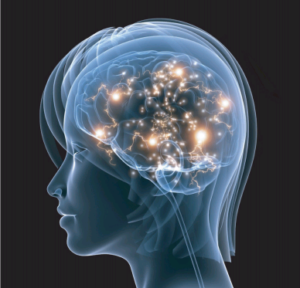
Five neuroscientists argue that fancy new technologies have led the field astray.
It’s a good time to be interested in the brain. Neuroscientists can now turn neurons on or off with just a flash of light, allowing them to manipulate the behavior of animals with exceptional precision…
ieeeCESocTV: Interview with Paul Sajda, IEEE Brain Initiative Chair, at ICCE-2017 in Las Vegas
March 3, 2017
Narisa Nan Chu, IEEE Consumer Electronics Society representative to IEEE Brain Initiative, interviews Paul Sajda, who gave a keynote talk at ICCE-2017.
Brain Scanners Allow Scientists to ‘Read Minds’ – Could They Enable a ‘Big Brother’ Future?
by Julia Gottwald and Barbara Sahakian – February 9, 2017
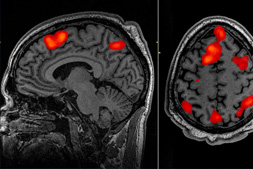
There is now a technology that enables us to “read the mind” with growing accuracy: functional magnetic resonance imaging (fMRI). It measures brain activity indirectly by tracking changes in blood flow – making it possible for neuroscientists to observe the brain in action. How far can – and should – this research take us?
Special Issue: Advanced Technologies for Brain Research
Proceedings of the IEEE – January 2017
Guest Editors Metin Akay, Paul Sajda, Silvestro Micera, Jose M. Carmena

This special issue will serve to increase the public awareness and foster discussions on the multiple worldwide BRAIN initiatives, both within and outside the IEEE, providing an impetus for development of long-term cost-effective healthcare solutions. The topics presented across the 9 papers in this special issue will serve as scientific evidence for health and policy advocates of the value of neurotechnologies for improving the neurological and mental health and well-being of the general population.
New Brain Mapping Technique Reveals Circuitry of Parkinson’s Disease Tremors
by Tom Abate – January 26, 2017
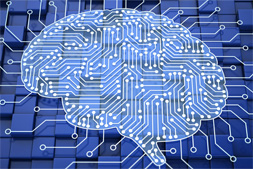
If a piece of electronics isn’t working, troubleshooting the problem often involves probing the flow of electricity through the various components of the circuit to locate any faulty parts. Stanford bioengineer and neuroscientist Jin Hyung Lee, who studies Parkinson’s disease, has adapted that idea to diseases of the brain, creating a new way to turn on specific types of neurons in order to observe how this affects the whole brain.
Ed Boyton: A New Way to Study the Brain’s Invisible Secrets
Watch the video from TedSummit, filmed June 2016. Read More
IEEE BRAIN Hackathon: Towards Becoming the Cyborg You Always Wanted to Be
January 5, 2017
Listen as reporter, Margot Wohl, follows 16 teams from around the world as they create brain machine interface technologies of the future, during our inaugural IEEE Brain Hackathon event. Read More
Spotting Speedy Brain Activity
by Peter Reuell – December 20, 2016

Using ultra-fast MRI scans, a research team led by Laura Lewis, a junior fellow in the Harvard Society of Fellows, was able to track rapid oscillations in brain activity that before would have gone undetected, a development that could open the door to understanding fast-occurring cognitive processes that once appeared off-limits to scientists.
Brain and Circuits Take the Focus at BioCAS2016
by Guoxing Wang and Timothy Constandinou – December 16, 2016
Brain-related electronic research has been a hot topic in BioCAS during the past years. With efforts augmented by the large brain research projects funding provided from major economies including the United States, Europe, Japan, and China, it is believed that brain-related research will be accelerated in coming decades. BioCAS2016 acknowledged this trend by arranging the technical programs with a special focus on “connecting the brain with microelectronic circuits,” and tutorials and keynotes were chosen with an emphasis on brain-related research. A first-time post-conference workshop, the Brain Circuits and Systems Workshop (BrainCAS), was dedicated to promoting the exchange of ideas between researchers across very different disciplines.
2016 IEEE Brain Initiative Budapest Hackathon
November 14, 2016
Mindtech Team competing in the brain hackathon at the SMC BMI Workshop in Budapest, Oct. 2016
Brain’s Support Cells Could Explain Mysterious “Spreading Pain”
by Diana Kwon – November 11, 2016
In people who suffer from pain disorders, painful feelings can severely worsen and spread to other regions of the body. Patients who develop chronic pain after surgery, for example, will often feel it coming from the area surrounding the initial injury and even in some parts of the body far from where it originates. New evidence suggests glia, non-neuronal cells in the brain, may be the culprits behind this effect.
Read More – Scientific American
Brain Implant Allows Man to Feel Touch on Robotic Hand
by Andrew Silver – October 13, 2016
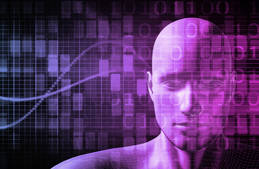
At the end of Star Wars Episode V: The Empire Strikes Back, Luke Skywalker feels when a needle pricks his newly-installed bionic hand. Researchers report today in the journal Science Translational Medicine that they can do something similar: stimulating regions of a human test subject’s brain with electrodes can recreate the perception of touch in a robotic hand.
Mind-Controlled Robo-Skeleton Enables Paraplegics to Regain Some Motion
by Bret Stetka – August 16, 2016
Patients paralyzed by a spinal cord injury can face a grim and grueling recovery process—one in which regaining function is far from a sure thing. But a new study published last week in Scientific Reports may provide some hope to those suffering from paraplegia. Scientific American MIND spoke with neuroprosthetic pioneer, founder of Duke University’s Center for Neuroengineering and lead study author Miguel A. L. Nicolelis about the findings and the field in general.
Read More – Scientific American
Google Brain Notes that AI ‘Humanist Thinking’ Can’t Be Achieved Without Diversity
by Kayleigh Bateman – August 15, 2016
Google Brain is a group at Google that focuses on ‘deep learning’, which involves a deep neutral network to leverage massive amounts of data to solve task. Jeff Dean, Head of Google Brain, fears that because computer labs only staff computer scientists, that a single world view could take shape from this bias. He believes that this could impede the development of news ways of thinking.
How Hackers Could Get Inside your Head With ‘Brain Malware’
by Victoria Turk – August 3, 2016
The idea of securing our thoughts is a real concern with the introduction of brain-computer interfaces. Researchers at the University of Washington in Seattle say that we need to act fast to implement a privacy and security framework to prevent our brain signals from being used against us before the technology really takes off.
New “Neural Dust” sensor could be implanted in the body
August 3, 2016
New Perspectives on Neuroengineering and Neurotechnologies: NSF-DFG Workshop Report
by C. Moritz, P. Ruther, S. Goering, A. Stett, T. Ball, W. Burgard, E. Chudler, and R. Rao – July 2016
Rapid advances in neuroscience, engineering, and computing are opening the door to radically new approaches to treating neurological and mental disorders and understanding brain function. These new approaches are based on the ability to record and stimulate neural activity with increasing precision. This precision is leading to the rapid expansion of neural interfaces, devices that interact with the nervous system to restore or enable sensory and/or motor function. This report focuses on a subset of neural interfaces termed brain–computer interfaces (BCIs) [also known as brain–machine interfaces (BMIs)].
Read More – IEEE Transactions on Biomedical Engineering
Brain-to-Brain Interface—the Next Great Leap in Human Communication
By Philip Perry – June 16, 2016
100,000 viewers recently tuned in to see Mark Zuckerberg and Jerry Seinfeld chew the fat on the first ever Q&A session on Facebook Live. At one point, Zuckerberg reiterated that the future of the internet and consequently humanity, lie in technology that gives us telepathic powers. In his view, we would be able to record our own experiences in real time, and share thoughts and feelings directly with friends and loved ones. He called it the “future of communication.” So how close are we to brain-to-brain interfacing?
The Neuroweapons Threat
By James Giordano – May 31, 2016
Nearly two years ago, Juliano Pinto, a 29-year-old paraplegic man, kicked off the World Cup in Brazil with the help of a brain-interface machine that allowed his thoughts to control a robotic exoskeleton. Yet like most powerful scientific breakthroughs, neurotechnologies that allow brains to control machines—or machines to read or control brains—inevitably bring with them the threat of weaponization and misuse, a threat that existing UN conventions designed to limit biological and chemical weapons do not yet cover and which ethical discussions of these new technologies tend to give short shrift.
Read More – Bulletin of the Atomic Scientists
How are Words Organized in the Brain? Nature Video.
April 27, 2016
Watch the video below, then Learn More at the Gallant Lab at UC Berkeley
Mapping the Brain – Using Cellular Sized Neural Probes and Optics
March 28, 2016
Electrodes are a way to eavesdrop on neural activity and when combined with optogenetics, neural probes can stimulate the mind’s circuitry and gather further insight into the causes of blindness, deafness, Parkinson’s Disease and Alzheimer’s.
Dr. Ted Berger at the Brain Prosthetics Session at SXSW
March 17, 2016
Scientists can make copies of memories. Here’s what that might mean.
TED Talks: Uri Hasson: This is your brain on communication
February 2016
Brain-Computer Interface Devices for Patients with Paralysis and Amputation: A Meeting Report
February 29, 2016
On 21 November, 2014, Food and Drug Administration’s (FDA) Center for Devices and Radiological Health (CDRH) held an open public workshop with the aim of fostering an open discussion on the scientific and clinical considerations associated with the development of Brain-Computer Interfaces (BCI) devices for patients with paralysis and amputation…
Read More – Journal of Neural Engineering
How Engineers Could Help Unravel the Mysteries of the Brain
By Kathy Pretz – January 22, 2016
In December, I attended the first IEEE Brain Initiative workshop held at Columbia where I learned about current research as well as what IEEE’s societies and councils are doing in this area…
Read More – IEEE-The Institute
Paul Sajda: New IEEE Brain Initiative a No Brainer
November 19, 2015
As massive global efforts across government, academia, and industry deepen their focus on developing neurotechnology, and as these technologies become mature enough to be considered for commercialization and standardization, IEEE’s new Brain Initiative has arrived at a crucial time…
Read More – IEEE Technical Community Spotlight
US Neuroscientists Call for Creation of ‘Brain Observatories’
October 15, 2015
What is the future of the BRAIN Initiative? This national White House Grand Challenge involving more than 100 laboratories in the United States has already made progress in establishing large-scale neuroscience goals and developing shared tools…
Read More – The Kavli Foundation
Brain-Computer Interface Technology and Development: The Emergence of Imprecise Brainwave Headsets in the Commercial World
By Narisa Chu – July 15, 2015
Brain-computer interface (BCI) headsets, which are injecting new break points in games and entertainment, deliver desirable special effects, aiding wellness training and rehabilitation…
How to Control Someone Else’s Arm with Your Brain – TED Talks
By Greg Gage – April 28, 2015


